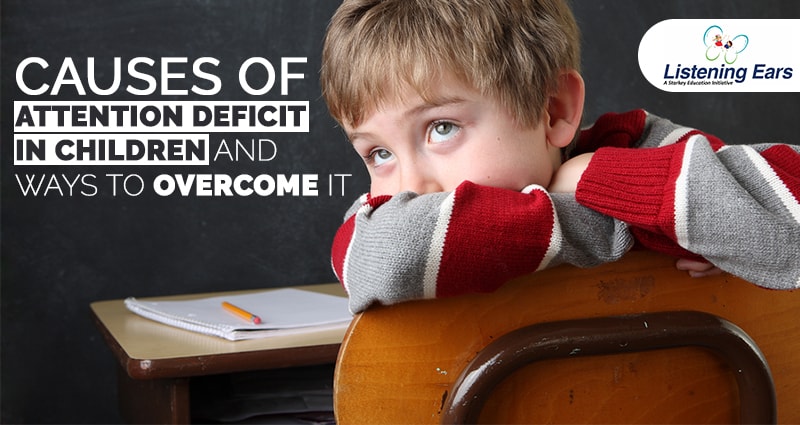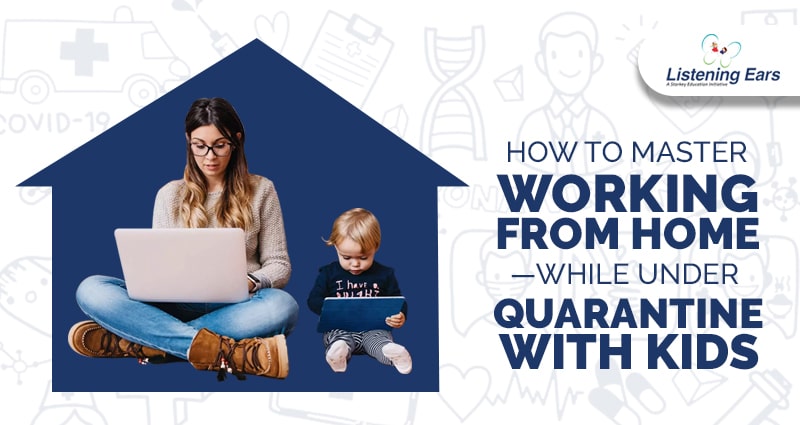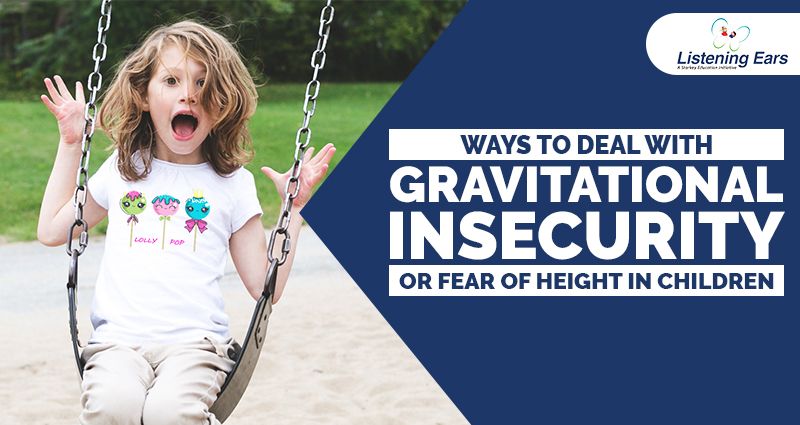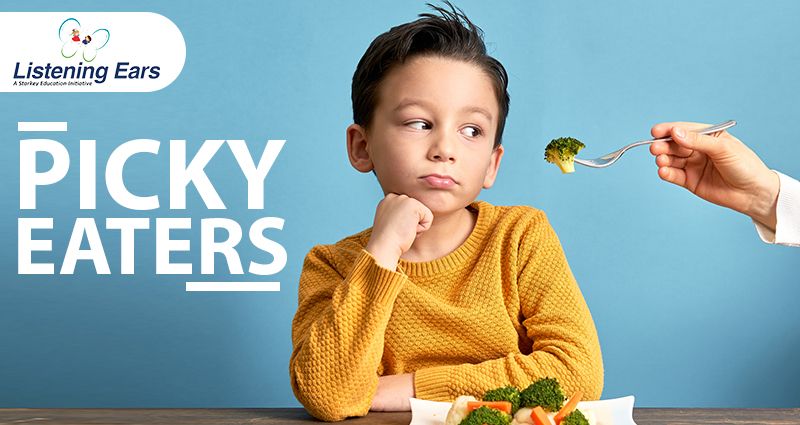Causes of Attention Deficit in Children and Ways to Overcome it

The Right Play and Toy for Every Age
September 30, 2019
Toilet Training Children With ASD
December 12, 2019Attention
Distractions can come in many forms. Children who are excessively distracted by their sensory needs will struggle to attend to simple commands. Other children are able to “keep it together” in a classroom or home setting yet their concentration is challenged.
Inattention can be presented as disregard, forgetfulness, carelessness, disinterest, neglect, or thoughtlessness. When a child is struggling to complete tasks, there can be many reasons or many signs of attention issues.
Inattentive Behaviors in Kids
Understanding that attention and executive functioning skills are connected can be a helpful starting point in addressing the areas that play into a child’s inattentiveness. In fact what adds to a child’s inattentive behavior can be a variety of needs, from sensory processing components to executive functioning issues.
Executive functions include the ability to initiate, plan and organize, set goals, solve problems, regulate emotions, and monitor behavior. Because these skills play a role in all most aspects of life, Executive Function deficits can hamper a child academically, socially and emotionally.
Types Of Attention
There are various types of attention that kids can struggle with, each impacting function and independence in occupations of daily life for children in different ways. Mastering these types of attention are necessary for learning, safety, social skills, and function.
Sustained Attention
Holding attention over a period of time is necessary for the focus and concentration needed in learning, listening during lectures, paying attention during conversations or instructions. Reading a book requires the ability to pay attention over a period of time without becoming distracted. As reading requirements become more advanced in the older grades, sustained attention is challenged by chapter books and reading comprehension.
Activities to Improve Sustained Attention-
- Word search- cross out all letter a’s, etc.
- Write out a list of words that start with a certain letter. Identify a certain number of words.
- Ordering information into alphabetical or numerical order
- Set a timer and complete a task or reading passage for a certain number of minutes
Selective Attention
By nature, we are able to select the input we pay attention to. Consciously, and unconsciously, we are able to select the input which is most important. This is visible by the student who listens to their teacher during a lesson while a lawn mower is running outside the classroom window. Anyone familiar with a classroom can imagine all of the stimuli which is thrown at a child at any given time: a fly on the window, the first snowflakes of the season falling outside, a flickering fluorescent light, a fellow classmate with a bad cough, a janitor cart passing by in the hallway, a student’s pencil that drops, a tapping of a shoe, a rumbling belly waiting for lunch…there is a lot going on which challenges selective attention! Having the ability to select from the many points of visual, auditory, interoceptive, tactile, stimuli in order to focus and attend to just one, is the brain’s ability to select and respond to just one factors that matter most.
Activities to Improve Selective Attention-
- Use visual cues
- Work on auditory skills
- Limit visual distractions
- Reduce background noise
- Position kids away from windows or hallways in the classroom
- The Focus Game
Alternating Attention
This type of attention refers to the ability to switch or immediately transfer focus from one activity to another. Switching points of concentration is needed to make sudden switches in alternating attention in tasks which require different cognitive skills. One example of this is cooking a meal and performing various tasks at once (boiling water, chopping carrots, and helping kids with homework is just one example. As a side note, it seems like teachers and parents excell in alternating attention 🙂 Alternating attention requires the ability to use the other attention types in tasks.
Activities to Improve Alternating Attention-
- Cooking with kids activities
- Musical chairs
- Eye Found It Game
- Animals restaurant
- Flip cards in a deck and perform actions based on the suit, color, or number
- Sort coins or colored items
- Practice performing a task that can easily become distractible such as going online to send an email…or shopping in Target 🙂
- The Sneaky, Snacky, Squirrel game
Divided Attention
Divided attention refers to one’s ability to focus on two or more things at the same time. Simultaneously concentrating on various factors is evidenced by driving and holding a conversation simultaneously. This ability to multi-task isn’t always an easy thing to manage. The ability to hold attention to various simultaneous point of concentration can require practice. A teen who is learning to drive will need the radio turned off and the only conversation in the car being verbal instructions from a parent or driving instructor. Only through practice does that new driver learn to concentrate on the road while the radio is playing.
Activities to improve divided attention-
- Practice games such as Connect Four with background distractions or verbal instructions
- Increasingly complex verbal memory games
- Simon with music playing in background




